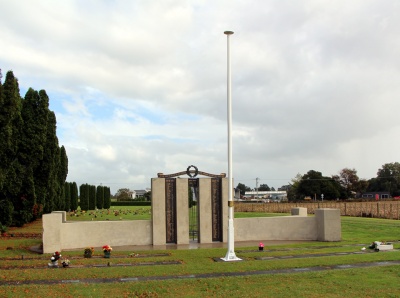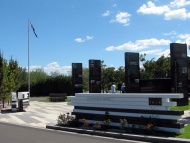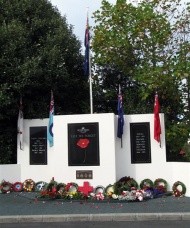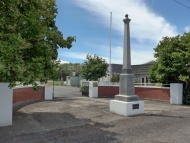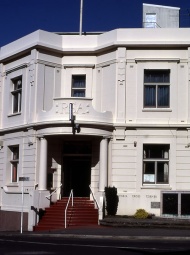Events In History
-
 24 April 1922New Zealand's first poppy day
24 April 1922New Zealand's first poppy dayA total of 245,059 small poppies and 15,157 larger versions were sold, earning £13,166. Of that amount, £3,695 was sent to help war-ravaged areas of northern France; the remainder went to unemployed returned soldiers and their families. Read more...
Articles
Anzac Day

First observed in 1916, Anzac Day - 25 April - commemorates those killed in war as well as honouring returned servicemen and women. The ceremonies that are held at war memorials across the country, or in places overseas where New Zealanders gather, are rich in tradition and ritual.
-
Page 4 – The making of Anzac Day
Anzac Day was made a half-day holiday in 1916, and the pattern of the day's events that occur now began at that time.
-
Page 5 – A sacred holiday
Anzac Day became a public holiday and took on new meaning in a time of peace. It became a time to express sorrow, not glorify war, and was a sacred day that had a secular tone
-
Page 6 – Another war and peace
Anzac Day came to have a wider focus and the commemorations became more popular in the years after the Second World War.
-
Page 9 – The red poppy
The red poppy has become a symbol of war remembrance the world over. In many countries it is worn around Armistice Day (11 November), but in New Zealand it is most commonly
Anzac Day in the Pacific

Armistice Day was the initial focal point for commemorations in the Cook Islands and Niue after the First World War. But because men from both countries had served in the New Zealand Expeditionary Force, observances gradually shifted to Anzac Day in April
-
Page 2 – Early commemorative efforts
During the 1920s war memorials provided a focus for commemoration services in the Cook Islands, where the first Anzac Day service was possibly held in 1927. On Niue, Armistice
-
Page 3 – The growth of Anzac Day
By the end of the Second World War military commemorations in the Cook Islands and Niue centered around Anzac Day. Services in both countries followed the pattern of those in
Royal Visit of 1953-54

For those New Zealanders old enough to have experienced it, the visit of the young Queen and her dashing husband, Prince Philip, to New Zealand in the summer of 1953-54 is a never-to-be forgotten event.
- Page 6 - A loyal peopleAs head of the Church of England the Queen laid the foundation stone of the new Anglican cathedral in Wellington, and as head of the Commonwealth's armed forces she laid a wreath
-
Main image: Hautapu RSA memorial
The NZRSA memorial at Hautapu cemetery near Cambridge.

